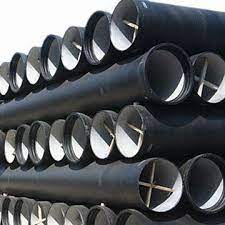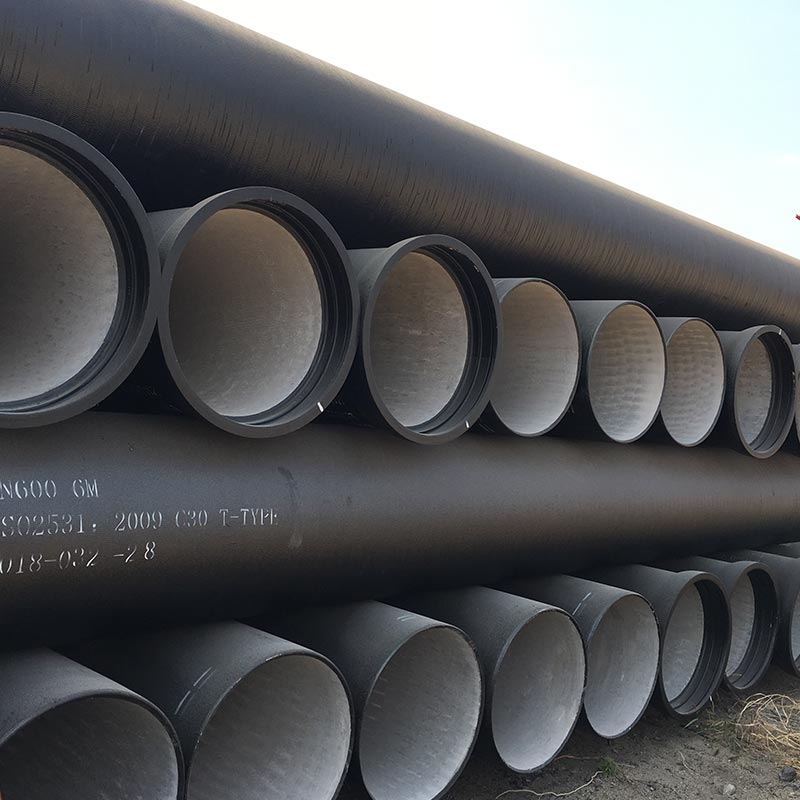Standard for ductile iron
Ductile Iron - The Standard for Ductile Iron
Unlike gray iron, which features dispersed graphite flakes, ductile iron contains free graphite in spheres or nodules. This unique microstructure holds ductile iron together and helps it retain its strength even under extreme pressure and bending conditions.
It is an extremely durable material that provides a range of properties that far exceed those of standard cast iron. Ductile iron is also more resistant to corrosion and abrasion than unalloyed carbon steel.
Mechanical Requirements
Ductile iron is a common material used for water and wastewater systems. It is often cast into a pipe and then machined to fit specific applications. The material has a wide variety of properties and performance characteristics that allow it to be used in a variety of applications.
The mechanical properties of ductile iron are determined by the composition and the microstructure of the ductile iron. The microstructure of ductile iron is composed of spheroidal graphite particles, which provide the material with remarkable tensile and impact strength. Other elements such as magnesium, ferrosilicon, cerium, and tellurium also contribute to ductile iron’s ductility.
During the casting process, a range of heating and cooling cycles can be used to enhance ductile iron’s physical properties. These include normalizing, annealing, stress relief, and austempering.
Normalizing can be used to reduce distortion, resulting in a microstructure that improves ductile iron’s tensile strength and wear resistance. The temperature during this process varies depending on the amount of silicon in the cast, but typically ranges from 815-870degC (1500-1600degF) for high-strength gray irons to 845-900degC (1550-1650degF) for low-strength gray irons and 870-925degC (1600-1700degF) for ductile irons.
Another type of heat treatment is stress relief, which softens and enables the material to withstand higher pressures. During this process, the iron is heated in a furnace to a temperature that is about 1,000oF above its hottest tempering point. This allows the metal to withstand higher pressures and thereby increase the overall ductile iron’s elongation.
Some OEMs use a stress relief procedure called in-mold stress relief, where the cast is left in the mold for an extended period of time, such as 24 hours, before being removed from the mold. This method can be less expensive and more convenient than a traditional furnace heat treatment, but it may not offer the same level of ductile iron’s elongation.
The ductile iron used in these standards was produced from SiboDur(r) 450 by GF malleable iron, a German manufacturer of ductile iron. This new ductile iron was engineered to meet the EN-GJS-450-10 standard for ductile iron (DIN EN 1563:2012) [38]. The material has an excellent combination of ductile and ferritic properties, with an ultimate tensile strength that is close to 450 MPa.

Chemical Requirements
Ductile iron is a versatile metal that can be used to produce a number of products including steering knuckles, plow shares, crankshafts, heavy duty gears, automotive and truck suspension components, hydraulic components and automobile door hinges. It is known for its high ductility and strength, as well as being abrasion resistant.
The chemical requirements for ductile iron vary depending on the specific application and grade. Generally, nodular irons have higher carbon content than grey irons, and should be produced using steel scrap that has a low manganese content.
Aside from the carbon content, a variety of alloying elements are needed to ensure that the ductile iron has sufficient static mechanical properties. These can include a range of strengthening and ferrite-stabilising alloying elements such as molybdenum, chromium and nitrogen.
However, a large proportion of the required alloying elements can be obtained from existing cast iron. Typical melting treatment procedures for ductile iron include spheroidisation, inoculation and the addition of a grained ferro-silicon alloy.
Spheroidisation is a melting treatment that changes the prerequisites of the carbon precipitation process, allowing the graphite to grow into spherical structures instead of lamellar ones. It is realised either as a ladle treatment or inside a die, and it can be influenced by various additives, such as magnesium-rich or cerium-rich ferro-silicon alloys.
Another essential ductile-iron melting treatment is inoculation, which increases the amount of grains in the crystallisation matrix. The malleable iron fittings use of this technique reduces the occurrence of shrinkage defects and improves the mechanical properties of ductile-iron castings.
These treatments are designed to ensure that the ductile-iron has the desired microstructure for its application. For instance, a stress-relief annealing in a temperature of over 600 degC is usually performed for engineering components that are required to have a uniform internal structure.
Another important melting treatment is the addition of a silicon carbide, which can be added to the melt to enhance the ductile-to-brittle transition temperature. This can be achieved by adding a small percentage of silicon carbide, such as 1%. In addition, a grained ferro-silicon metallurgical alloy can be added to increase the grain size of the ductile-iron crystallisation matrix.
Heat Treatment
The heat treatment of cast iron is an important part of the production process. It alters the microstructure and mechanical properties of the iron to achieve a desired performance level, which improves its durability and helps meet quality requirements.
The most common heat treatments are stress relief and annealing. These reduce elongation and hardness to improve machinability without significantly lowering strength. The heating and cooling rates can be adjusted to suit the desired results (Fig. 6) (Table 4).
In some applications, a combination of both heat treatments can be used to produce ductile irons that are strong enough for the application but not as hard as traditional iron castings. This can be achieved by combining the stress relief treatment with slow cooling to lower residual stresses.
Using the annealing process can also improve the plasticity of the ductile iron. It has a significant effect on the plasticity of the material without affecting its tensile strength, which makes it ideal for a wide range of applications where high strength is not necessary.
Another way to improve ductile iron is to allow it to cool during the annealing process, which can enhance its lubrication and wear resistance. It can also reduce the residual stress, which is a key factor in cracking.
It is recommended that ductile iron be cooled at a rate of about 100degC (55degF) per hour to 650degC (345degF), and then reheated to 1350degC (730degC) before casting. This can reduce the soak time and improve the quality of the finished product.
This method can be particularly useful for improving ductile irons that are subjected to severe abrasion or impact. It can also help improve the ductility of materials that have been weakened by other processes, such as machining and casting.
The annealing process has significantly contributed to the ductility of all the samples studied. Its effect was not only seen in terms of hardness, ultimate tensile strength and impact energy but also in the tribological behavior of the ductile iron under 10N load. The tribological behaviour of the samples revealed a dual wear process, which includes abrasion and oxidation.
Qualification
Ductile iron is a type of cast iron alloy that contains magnesium added to it, which results in a microcrystalline structure and various mechanical properties. The process used to create ductile iron is known as casting or foundry processing, and it can be done using pig iron or other forms of scrap.
The chemistry of the scrap and the method of treatment are important aspects of the ductile iron’s final quality. The chemistry affects the microstructure and mechanical properties, and the scrap chemistry can be improved by using high-quality pig iron.
A variety of heat and cooling cycles can be used to improve machinability of ductile iron, including furnace annealing. The annealing process softens the iron, which leads to increases in ductility and impact resistance.
In addition, annealing can increase the strength of ductile iron by increasing the carbon content. This can be a good strategy for certain applications, such as castings for structural purposes.
During the annealing process, it is important to keep the iron at a consistent temperature for a prolonged period of time. This is important for the ductile iron’s microstructure to retain its initial shape and tensile strength.

After a certain amount of time, the casting is quenched to achieve the desired final material properties. The quenching temperature is also important, as higher temperatures can cause distortion and cracking in the ductile iron.
This is due to the retained austenite and resultant martensite content in the ductile iron. Quenching brass bush at a lower temperature results in a more normalized microstructure that has increased toughness and reduced distortion and cracking.
The annealing process is essential for ductile iron’s microstructure to stabilize and remain stable during the fabrication process, and it can be achieved by various heating and cooling cycles. The main purpose of annealing is to improve the microstructure, so it’s crucial that the correct cycle is chosen for each application.
The final product is tested by the manufacturer in order to ensure that it meets all of the requirements of the standard. These tests can include tensile, elongation, compression and fracture resistance. The results are then used to determine a grade that will meet the specified requirements for the end use.
Comments
Post a Comment